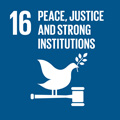- Docente: Francesca Biagini
- Credits: 5
- SSD: L-LIN/21
- Language: Russian
- Teaching Mode: In-person learning (entirely or partially)
- Campus: Forli
- Corso: Second cycle degree programme (LM) in Specialized translation (cod. 9174)
-
from Feb 19, 2025 to May 15, 2025
Learning outcomes
The student knows the strategies, techniques, traditional and state-of-the-art tools and methods used in specialized translation tasks; s/he is able to apply them to the translation of texts for the publishing industry from different genres and text types, from Russian into Italian, meeting specific translation briefs and respecting the communicative functions of the source texts; s/he knows the main techniques required for information mining, drafting, editing and revising texts, including the overall quality evaluation of the translated text.
Course contents
The course aims to deepen students' linguistic knowledge and translational skills, so that they can work autonomously and professionally when faced with specialized texts in the publishing area. During the course, students will acquire specific competence concerning several types of texts in the general field of translation for the publishing industry. In particular, work will concern non-fiction and narrative texts. The features, style and register of the source text will be examined, as well as the addressees and function. Translating practice will involve exercises in terminology research and documentation through parallel texts, dictionaries and the Russian-Italian parallel corpus. Translating practice will be supported by theoretical reflection. The translations will be regularly compared and discussed in the classroom, and revision, editing and proofreading exercises will be carried out on students’ own work and on comparable texts. The lessons will also focus on analysing the characteristics of the translation contract, and students will learn how to write a translation proposal. The course will include some of the conferences organized by the Laboratory of Literary Translation at the DIT.
Readings/Bibliography
F. Biagini, I nomi propri di persona nel russo: forme derivate e forme marcate , “Quaderni di Semantica”, 2005, 2, pp.319-333.
Biagini, F. (2023) Aspetti linguistici della traduzione tra l’italiano e il russo: il caso della segmentazione del testo in enunciati, in F. Gatta e M. Mazzoleni (a cura di), “Studi Italiani di Linguistica Teorica e Applicata”, LII, 3, numero monografico su “Linguistica e traduzione. Un approccio testualista”, pp. 515-532.
K. Čukovskij, Vysokoe iskusstvo, Moskva: Sovetskij pisatel’, 1968 (http://www.chukfamily.ru/kornei/prosa/knigi/vysokoe).
N. K. Garbovskij, Teorija perevoda, Moskva: Izdatel’stva Moskovskogo Universiteta, 2004.
V. N. Komissarov, Sovremennoe perevodovedenie: učebnoe posobie, Moskva : ETS, 2004.
O. I. Kostikova, Istinnostnye i cennostnye aspekty perevoda skazki, "Vestnik Moskovskogo universiteta", Serija 22 Teorija perevoda, 2015, 2, pp. 100-113.
S. Nergaard (a cura di), La teoria della traduzione nella storia, Milano: Bompiani, 2002.
S. Nergaard (a cura di), Teorie contemporanee della traduzione, Milano: Bompiani, 1995.
L. Salmon, Teoria della traduzione. Milano: FrancoAngeli, 2017.
L. Salmon, L'antroponimia russa. Semiotica, pragmatica, traduzione (II), "Quaderni di Semantica", 2004, 1, pp. 39-101.
V. S. Vinogradov, Perevod. Obščie i leksičeskie voprosy, Moskva: KDU, 2004.
Teaching methods
Student attendance is compulsory (at least 70%). The course includes both seminars and theoretical reflection.
During classes, students will be asked to read, analyse and contextualize texts before starting the translation process.
Translation techniques will be discussed from the point of view of strategies to be applied to produce good quality 'translation' aimed at a specific target readership.
Exercises on research and preliminary documentation will be also carried out.
All students will be asked to participate in collective discussion, which will be a fundamental method to strengthen students' awareness of their skills.
Translations, self-revision and revision of texts translated by otherswill be assigned as homework for individual practice.
Lessons will be both practical and theoretical in order to make students aware of editorial strategies and practice applied in the publishing industry to produce good quality 'translation'. The theoretical aspects of translation as a cross-cultural process will also be examined.
As concerns the teaching methods of this course unit, all students must attend the online Modules 1, 2 on Health and Safety [https://www.unibo.it/en/services-and-opportunities/health-and-assistance/health-and-safety/online-course-on-health-and-safety-in-study-and-internship-areas].
Assessment methods
The exam will consist of a translation proposal (including an agreed translation task) to be delivered to the teacher as individual work. The translation proposal should be prepared at home, following a model presented during lessons, and submitted by e-mail.
The text to be translated can be chosen individually or from two tasks suggested during the course and made available on the Virtuale e-learning platform about a month before the hand-in date.
The translation project should be structured as follows:
- a translation proposal, approximately 2 pages (2000 characters per page including spaces);
- a translation, 2-3 pages (2000 characters per page including spaces), with references to the pages of the source text;
- the scanned source text (for those who present a text chosen individually).
The mark of the examination is expressed out of thirty - the pass markis 18/30 and the highest mark is 30/30, according to the following grading scale:
30-30L
Excellent level. The candidate possesses excellent translation/language skills, with a very high level of competence in the target language /(or) in the language and culture being studied.
27-29
The candidate makes only minor errors, and shows a solid command of the required skills and competences.
24– 26
Generally sound level. The candidate displays a number of shortcomings, indicating a reasonable command of the required skills and competences.
21-23
Adequate level. The candidate displays significant shortcomings and only an adequate command of the required skills and competences.
18– 20
Minim level. The candidate only meets the minimum level required and shows a minimal command of the required skills and competences.
< 18 Fail
The candidate’s does not meet the required standard and shows a wholly inadequate command of the required skills and competences.
Teaching tools
- Computer, video-projector, Internet connection Standard printed dictionaries
- Online and cd-rom dictionaries
- Monolingual and parallel corpora
- E-learning platform (https://virtuale.unibo.it/)
Office hours
See the website of Francesca Biagini
SDGs


This teaching activity contributes to the achievement of the Sustainable Development Goals of the UN 2030 Agenda.
